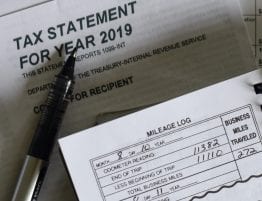Most taxpayers dread an IRS audit. They picture an IRS agent at their doorstep, ready with a penalty or prosecution, but that isn’t the case. In most tax cases, the IRS does not conduct a field audit; instead, they use mail to communicate with the taxpayer. In fiscal year 2018, the IRS conducted 74.8% audits through mail correspondence, and only the remaining 25.2% were conducted in the field.
The IRS is forced to manage with fewer resources, which has taken its toll on audits. In 2020, the agency’s income tax audits have dropped to its lowest level yet. Moreover, those audited are more likely to be the wealthy than moderate and low-income groups.
Accounting Today shares 10 major IRS audit trends that reveal the changed position of the IRS with respect to audits.
“1. Most audits are done by mail
This trend started with IRS reforms in the late 1990s. In 1998, just before IRS reforms, the service audited 47 percent of taxpayers by mail. In the past decade, IRS data shows that the service prefers the less-intrusive mail audit. Today, three out of four audits of individual taxpayers are done by mail – a ratio that has held since 2010. These audits usually challenge small amounts of credits or deductions on a return, and require only a mail response, with documentation, to an IRS central campus location.
2. The main issue in audits: The EITC
Fifty percent of all individual audits involve a taxpayer who is claiming the Earned Income Tax Credit. IRS efforts to curb EITC errors largely rely on audits to hold a questionable EITC claim on a return. Politicians have criticized the IRS in the past for picking on low-income taxpayers, and the EITC audit rate is their main evidence. Compared to other taxpayer profiles, the IRS clearly has the propensity to address the EITC taxpayer more than other issues, even the small-business individual taxpayers.
3. An alarming amount of people do not respond to an audit
There is linkage here to the EITC mail audit. The Taxpayer Advocate reports that almost two-thirds of all mail audits go without response or are assessed by taxpayer default. That is, the IRS just assesses the additional tax without the taxpayer contesting the service’s determination. Only one in five taxpayers agree to their mail audit adjustment – and likely, from the data, they don’t understand how to appeal. This mess leads to many audit reconsiderations (i.e., an audit ‘re-do’ request). Again, more question marks here for the targets of mail audits – the low-income population.
4. The most common IRS challenge to a return is not an audit
The dreaded CP2000 Automated Underreporter notice is current three times more prevalent than an IRS audit. The CP2000 program utilizes IRS information returns (W-2s and 1099s) to match them against the filed return to discover discrepancies. A discrepancy may result in a CP2000 notice proposing additional tax (and possibly penalties) to the return. Most taxpayers do not realize (or care, for that matter) that a CP2000 is not an audit. The CP2000 is less intrusive than an audit because the IRS is not allowed to examine the taxpayer’s books and records. For most taxpayers, however, the difference does not matter: The average amount owed for a CP2000 notice in 2018 was $1,773.
However, there is good news for taxpayers: Even the mostly automated underreporter process has been cut back due to lack of IRS resources.
5. The IRS knows who to audit
The audit change rate was 89 percent for all taxpayer types in 2018. In fact, the audit change rate has been between 81 percent and 89 percent since 2005. When the IRS selects a return for audit, they pretty much know it will likely result in an adjustment.
6. Field audits are rare, but expensive
In 2018, the IRS hit an all time low for the number of field audits conducted. Field audits are the most comprehensive, and are saved for complex taxpayers and situations – like businesses and tax avoidance schemes. The IRS has said that their audits have a great return on investment and reduction of audit results in large amounts lost to the U.S. Treasury. The numbers support the IRS. In 2018, the average amount owed in a field audit was $85,400. Luckily for taxpayers, the IRS only conducted just under a quarter of a million field audits in 2018.
7. Want your business to escape audit? Be an S corp or partnership
The IRS continues to struggle to audit S corp and partnership returns. This situation is likely to get worse as the more experienced IRS business auditors continue to retire. Audit rates for S corps and partnerships are both 0.22 percent – or, put another way, one in every 455 passthrough entities were examined in 2018. It is no wonder that the number of S corporations have increased by 38 percent from 2005 to 2018 (3.5 million in 2005 versus 4.85 million in 2018).
8. Audits on the wealthy are still popular, but have dropped
In 2011, one out of every eight taxpayers who earned more than $1 million in income were audited. In 2018, the number dropped to one in every 31 taxpayers. However, those who earn more than $1 million are still among the most popular audit profiles.
9. Audits have dropped, but penalties are still prevalent
The total volume of individual audits and CP2000 notices has dropped from 4 million in 2005 to 3.9 million in 2018. However, in 2018, 606,121 individual taxpayers were assessed the accuracy penalty for making an error on a tax return (audit or CP2000 notice). In 2005, that number was only 58,366. The moral here is if the IRS has to audit or send a CP2000 notice, it will now look to penalize errors to deter future noncompliance. The number of individual taxpayers with an accuracy penalty from an audit/CP2000 notice has increased 10 times since 2005.
10. Tax evasion prosecutions are low
Finally, the ‘fear of an audit”’ myth buster. The IRS does not like to publish this statistic. In 2018, there were only 636 indictments of legal source tax crimes. IRS tax evasion criminal investigation cases have dropped by 58 percent since 2013. The main source of IRS legal source tax crime cases are IRS field auditors and criminal investigators, i.e., revenue agents and special agents. From 2013 to 2018, the numbers of revenue agents and special agents have decreased by 26 percent and 21 percent, respectively. As a result, the number of criminal investigations and indictments continue to decline.”
Fill out the form for a free and confidential consultation.
Error: Contact form not found.









